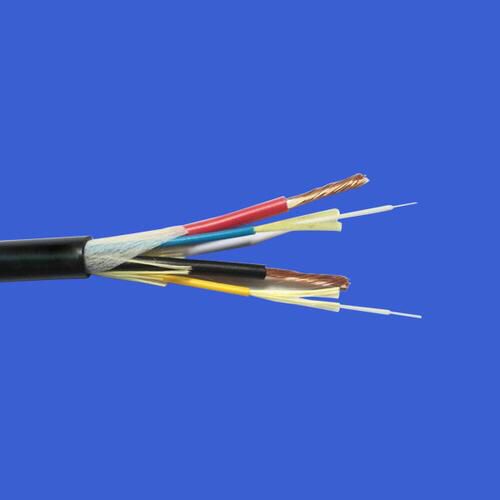Tom Tang
With the explosion of digital traffic and the ever-growing array of bandwidth-hungry applications, Optical Transport Network (OTN) evolves from point-to-point DWDM remedies to scalable and robust optical networking applications that cater to a wide variety of client signals with equally-varied service requirements. Carriers are also placing a particular emphasis on OTN in the Metro area, where it is shifted rapidly from SONET/SDH to wavelength-division multiplexing (WDM). With the goal of boosting bandwidth and increasing network functionality, OTN provides a way to support different traffic types in a more cost-effective manner than by using SONET/SDH networks.
What Is OTN Network?OTN
Defined by the ITU Telecommunication Standardization Sector (ITU-T), OTN is a digital wrapper technology that provides an efficient and globally accepted way to multiplex different services onto optical light paths. The OTN technology or digital wrapper technology provides a network-wide framework that adds SONET/SDH-like features to WDM equipment. It creates a transparent, hierarchical network designed for use on both WDM and TDM devices. (More information about WDM and TDM systems is available in Optical Wavelength Bands Evolution.)
OTN integrates functions of transporting, multiplexing, routing, management, and supervision, and builds OTN client (e.g. SONET/SDH, IP, ATM) connections in the Metro and Core networks. Nowadays, it is widely deployed in the metro, regional, and long-haul DWDM packet-optical transport networks.

Five Key Benefits of OTN Network
OTN network combines the advantages of optical transmission and electrical processing to provide end-to-end, transparent pipe connections, increased spectral efficiency, and large-capacity transmission capabilities for long-haul transmissions. The primary benefits of the OTN network are presented as follows.
Standard Hierarchy—OTN standards include a standard multiplexing hierarchy, defining exactly how the lower-rate signals ascend into the higher-rate payloads. This allows the WDM platform to shift lower-rate services within 10Gbps, 40Gbps, or 100Gbps wavelengths, without the need for external wavelength demultiplexing and manual interconnects.
Transport Capacity Expansion—OTN networks provide the underlying high-capacity infrastructure for core interoffice, metropolitan interoffice, and broadband business-access networks. Carriers deploy OTN to support the greatest number of services on the least amount of infrastructure.
Reduced Cost—With multiple clients transported on a single wavelength and their specific requirements preserved, the OTN network reduces the overall cost of transport and ensures efficient bandwidth utilization.
Transport Flexibility—Network operators can employ the technologies needed to support current transport demands, while also enabling future adoption of new technologies as business needs dictate. It can easily scale to ring networks, end-to-end networks, and mesh networks.
Timing Transparency—Timing transparency is important for offering wholesale services to third-party providers. The transparency of OTN enables the networks to carry any service, including Ethernet, storage, and digital video, as well as SONET/SDH without interfering with the client timing.
Optical Transport Network Solutions
WDM MUX/DEMUX, Optical Add/Drop multiplexer (OADM), EDFA, WDM transponder/muxponder, optical line protection (OLP) card, variable optical attenuator (VOA), etc. are the products used in OTN networks. For different network requirements of every individual network task, the equipment deployed in an OTN network can be various. Following list of some common OTN-based products as well as their functions.
| Item | Function |
|---|---|
| WDM MUX/DEMUX | Provide high-performance signal division and multiplex |
| OADM | Add/drop the selected wavelengths in one or multiple channels |
| EDFA | Extend the power budget over long distances |
| WDM Transponder/Muxponder | Provide functions such as electrical and optical signals conversions and wavelength conversion/additional functionality of multiplexing |
| OLP | Optical line protection for optical power monitoring and automatic switching |
| VOA | Variable optical attenuator for optical power management |
Things You Should Be Aware of Before Deploying an OTN Network
If you are about to deploy an OTN network by yourself or get a customized OTN solution from solution suppliers, there are some details and requirements that you should know in advance.
How many spans do you have, and how far between each of the spans?
The specific distance your network transports will determine the fundamental equipment needed in the OTN system. Specifically, the transmission distance between each span will indicate whether the Dispersion Compensation Module (DCM) would be needed to compensate in the fiber optical link.
What's your fiber type and the link loss (typical 0.25dB/KM)?
OTN solutions offered by solution suppliers can be tailored to both dual and single fiber types. And link loss is necessary for collocating the most appropriate optical transceivers and some active components such as EDFA amplifiers.
What's the data rate between each span? And how many businesses do you plan to transmit?
To make clear the data rate and capacity for each span in your network are conducive to choosing the most practical types of MUX or OADM for your current OTN infrastructure. And a good acquisition of the number of businesses you are to deploy can pave the way for future network expansion.
Summary
All in all, OTN technology represents both a technical leap forward in optical networking over SONET/SDH and a business opportunity for carriers and service providers alike. OTN networks can fully leverage the transport infrastructure in the era of data/transport convergence by offering carriers unprecedented architectural flexibility, client-protocol independence, and service differentiation. OTN network has come of age and will certainly continue to evolve as traffic demand grows.






